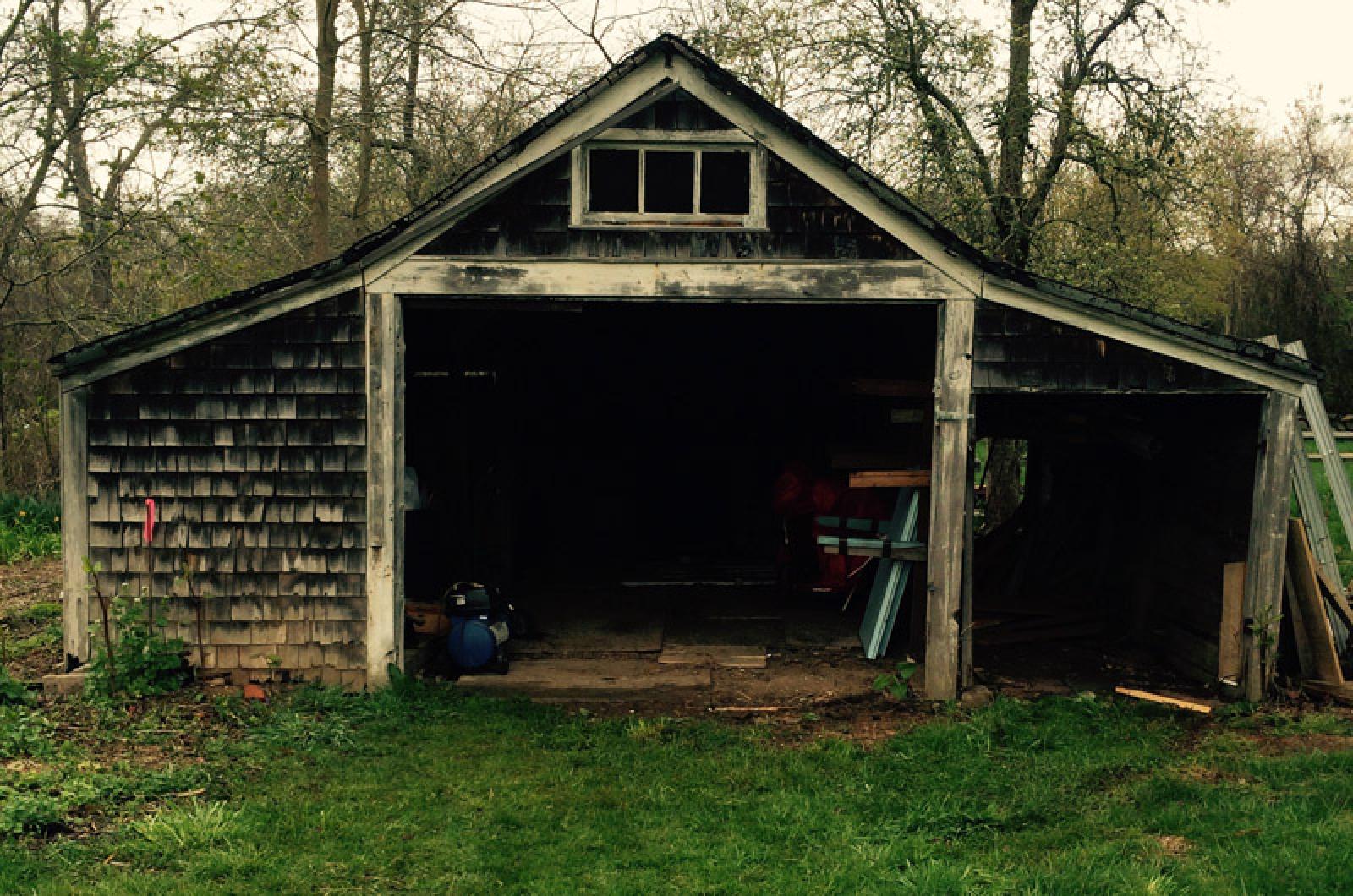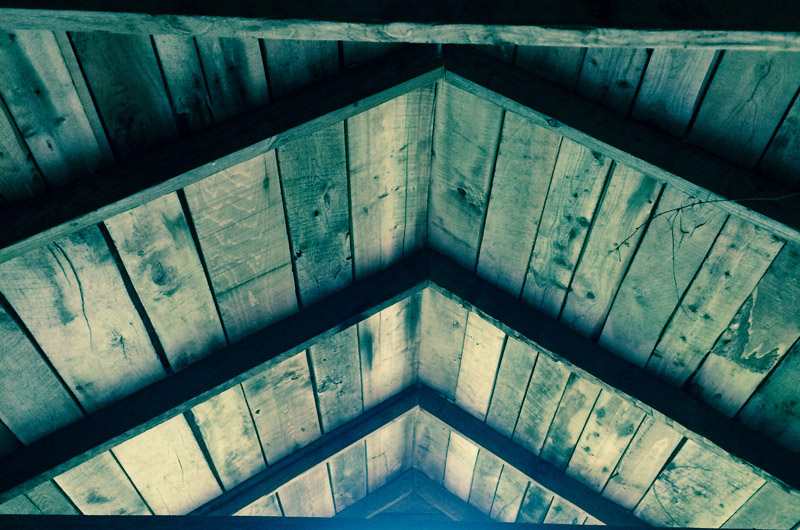The old garage was demolished this past April. John Keene’s monster machine, which we called Tyrannosaurus, bent down a couple of trees as though they were small garden weeds then munched up the old building, which had been my favorite hideaway when I was a kid.
My father built the garage in 1950, the summer he turned 50 years old. He planned a simple design for a structure situated less than 100 feet from the family’s south-facing house on South Road in Chilmark. He wanted a place to store his 1940’s woody station wagon, the trash barrels (no recycling bins then), and materials for my brother Hank’s wooden boat building project. In later years, grandsons and granddaughters could toss a basketball, and have cookouts and birthday parties.
Dad’s first lumber was driftwood, washed ashore by the surf of the Atlantic Ocean onto South Beach and collected by his children. As teenagers in the 1950s, my sister, brothers and I would canoe or sail across Chilmark Pond to that strip of sand separating the great ocean from the brackish pond water. We’d have a refreshing dip in fresh surf or tepid pond, then go looking for wood as requested by our father.
When a good dry plank was found, partially embedded in the sand, the call went out. Working as a team, we dragged our dry and weathered find across the sand to the Chilmark Pond side of the barrier beach where we had parked our canoe. The sand did not grab, splinters did not prick. The wood was warm, silver white and smooth, so tumbled by the salty sea. Its origin was a mystery.
The greater challenge was paddling the plank across the pond to our landing in Wade’s Cove — easy to do on a calm day but fairly tricky when the wind picked up.
The canoe’s stern end was manned by the strongest paddler, usually my sister, a tall, mature 16-year old. I was the bow paddler at 14, and my brother Jon at 11, sat in the mid section on the floor of the canoe, facing the stern as a lookout for trouble.
Upon reaching the other side, a familiar voice hailed us, “Woo-hoo!” There was Dad, with his head poking out of the old woody station wagon. He had hitched his flatbed trailer to the car to haul the heavy plank.
At the house, Dad had marked off the site for his garage with locust posts. Locust trees grew everywhere on the property. The trees sent their roots out across our meadow at a shallow depth, so new plants sprouted quickly every spring. Those seedlings were mowed away easily, but the ones at the edge of the meadow remained and grew tall. The locust wood was hard and durable, very useful for fence posts, firewood, and, more recently, furniture legs and garden arbors.
But gathering one driftwood plank a day would require years for Dad’s garage to materialize. Thankfully, my parents’ friends got caught up in the excitement — the Morgans, Wakemans, Bentons, Salmons, Emersons and Eddys. On Dad’s 50th birthday, in late August, they presented him with one new plank inscribed with all their names, along with a gift of $50 for lumber from H.N. Hinckley & Sons, to be delivered at his command. From any angle, my father’s structure was different from most soundly built garages. The floor was simply dirt. Cedar posts, harvested from our property, marked the four corners of the rectangle, oriented east to west, with just one opening on the west end. From that doorway Dad could just fit his woody station wagon, snug against the frame. He installed one lone window, with
three small lights lined up horizontally, high up in the western gable. This fixed “eye” served no greater purpose than to survey over 66 years the scene across the inner yard to the meadow beyond — the oaks and locusts, an abandoned skiff, a birthday cookout, a wedding party, a baby asleep in a carriage, dogs loose on the run, a gate swinging open in the wind, children at play, an old man walking with a cane, his wife in a wheelchair, a sunset.
We could not imagine ever removing the building’s form and presence.
As time went on, family and friends fed the old garage a lot of stuff, a changing collection of rusty tools and broken tables, bicycle and mowing parts, gas cans, a new mattress, an old one, hen’s eggs laid in a pipe, a mouse house in boxes of books, and, in recent times, acrylic/oil paintings found against the back wall, left there by my older brother Hank who died in 2002.
As the garage aged, its owners did too. Several of those children who towed the first planks are now in their 70’s and 80’s. Hank reached 71 before he died. It was time for change and letting go, but so many personal experiences stood in the way of change. The garage became progressively dilapidated and dark.
Then, in 2007, Dad’s garage came back to life. That winter my pregnant daughter and son-in-law moved from New York city to the historic South Road house, becoming the first full-time residents on the family property since the old folks, Mom and Dad, passed away in 1994 and 1990 respectively. The son-in-law’s eyes lit up when he saw the old garage. He had discovered the ultimate hideaway to store his life affirming stuff from New York city. Here was the perfect space for a motorcycle, surfboards and workshop tools. Here was the seclusion needed to construct things — wheeled machines, Halloween scarecrows, surf boards. Here was the garage, cleared out and filled up again. Its interior lit up nights and wonderful creations appeared by day. The family cheered when the son-in-law’s twig house-cart won a blue ribbon at the Agricultural Fair.
Then in 2015, the little family was awarded a Chilmark homesite and the opportunity to design and build their own home. The old garage fell dark again. Its useful life had definitely ended. Inspector Lenny Jason approved the “demolish and re-build” permit.
After the dust from the 2016 demolition settled, I imagined a new structure that would include space and natural light for a studio and workshop. Dad would have liked that. A few of the washed ashore planks were saved, also the inscribed 50th birthday gift plank, and the “Corn on the Cob” sign, faded and weathered, a remnant from the food booth that our kids ran at the Grange Hall’s Agricultural Fair in the 1970’s.
We incorporated some of the old with the new, and we would never forget what Dad had built, a testament to his Yankee ingenuity, to stubbornly making the most of it, and to the way we were.





Comments (10)
Comments
Comment policy »